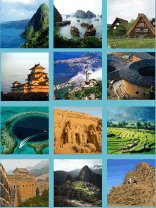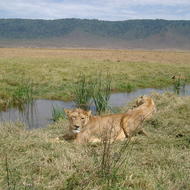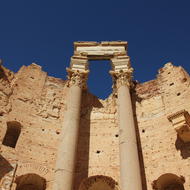Guide 1: Understanding tourism at your destination
What this guide will tell you:
This guide will help you understand why tourism matters, some key questions you may need to ask and answer, and some ways to fill evidence gaps, such as utilising other partner's resources. Continue reading below to follow our steps to success.
Steps to success:
- Why this matters
-
Every business school in the world teaches, 'If you can't measure it, you can't manage it'. You cannot manage tourism or help shape it in progressive ways without having a basic understanding of what it is, how it affects people and places, and what it can potentially become with some inspired and progressive interventions. To ensure the scarce resources available for tourism development and heritage protection are utilized to their full effect, it is crucial a unified understanding exists across each destination regarding what is successful, what does not work, and what sustainable opportunities exist for growth or development. Not all tourism is good tourism; some forms of tourism are much more sustainable, while others may have a negative effect on the surrounding environment if not managed properly.
Almost all potential sites can benefit from better evidence and data – this is not just a heritage management issue, but a tourism destination issue. It is necessary you work to gather this information. Other places similar to your sites have successfully addressed these questions, and often with limited resources. You may find the examples most relevant to your situation in our Resources page.
-
 Start with the basics – define your terms of reference
Start with the basics – define your terms of reference -
Be clear on where and what your 'destination' is. A destination is the physical space in which a tourist spends their holiday or vacation. It includes a full range of services, products and experiences:
- The attractions people visit
- The accommodation in which they stay
- The transport arrival hubs
- The food and drink establishments utilised
- The retail outlets in which they shop
- The museums and galleries they visit
- Even the city, town, village, or homes where the local community resides.
A World Heritage site (WHS) can be a destination in itself. However, more often it is located in, or part of, a wider venue, forming the key, or one of the key, attractions of the place concerned. The UNESCO World Heritage and Sustainable Tourism Programme is based on the need to manage tourism at a destination scale – managing the issues simply within the boundaries of the World Heritage sites would be ineffective.
Defining your broader destination is extremely important in building foundations for sustainable tourism, and it can be particularly helpful to look at how other places have done this already. For example, Angkor Wat WHS is the attraction, but Siem Reap is the destination, or Uluru Kata Tjuta WHS (formerly known as Ayers Rock) is the attraction, while Alice Springs is the destination.
We offer guidance below that addresses tourism challenges at a destination scale. Therefore, it will be important to know and understand the geography of your location - where it begins and also where it ends.
-
 How much do you know about the destination?
How much do you know about the destination? -
Here are some basic questions you will need to answer about your destination. It may be useful to list your answers in a separate document to refer back to later.
Can you answer all of the following?
- How many tourists do you receive per year?
- How long do they stay in your destination?
- Who are your tourists? Where do they come from?
- Are you attracting the most advantageous segments of the tourism market? How do you perform relative to other comparable destinations?
- How do tourists arrive and move around your destination? Where do they go to afterwards?
- What are their motivations for coming? What do they know about your site?
- What do they care about? Do they understand your outstanding universal value (OUV)?
- What are the positive and negative social, economic, cultural, and ecological impacts caused by visitors? How do they affect the heritage management of the site?
- Where, and by whom or what, are these impacts experienced?
- How many people can your site/destination sustainably cope with and manage?
- Do you understand the scale, quality, capacity, and location of your tourism infrastructure (hotels, restaurants, travel providers, food and drink, leisure, retail)?
- How do your visitors spend their money? Who benefits from this spending? Who does not benefit?
- Who picks up the costs of the heritage?
- Who or what entity must be part of a partnership that would bring about positive changes to your destination?
If you cannot answer these questions, or similar questions specific to your site, you must dedicate some time to trying to find these answers before attempting to change anything. These answers will help you gather the necessary information to begin managing tourism in your location at a destination scale.
-
 The four crucial issues you need to measure and understand, and why
The four crucial issues you need to measure and understand, and why -
Understanding tourism is the first step to managing your site more effectively. Surprisingly, few World Heritage sites collect accurate data on key tourism indicators. Good data is the key to both being able to monitor threats to the site or the host community, and ensuring interventions are effectively targeted. The following four topics are crucial to fully understanding tourism possibilities at your destination.
1) Supply side
To manage tourism effectively, destinations need to understand the supply side of the process – which involves undertaking an inventory of tourism assets and infrastructure, while assessing the scope for growth and the changes over time. The effectiveness of a destination relies on securing revenue and is heavily dependent upon the location, scale, capacity, and quality of the accommodation, transport system, food and drink, retail, leisure experiences, and visitor attractions. Every destination should have a simple and up to date inventory of its tourism assets and visitor attractions.
2) Demand side
Sites must also understand the demand side of the tourism sector:
- How many people want to visit? Is the demand growing or declining?
- Who are the visitors, and when do they visit?
- Why do they come, and how long do they stay?
- How much do they spend and what do they purchase?
- Where do they come from?
- What do they want to experience, and how do they learn about the site, its values, and the host community?
- Are visitors satisfied with the experience?
- How is all of this changing over time, and does the destination attract the most advantageous visitor segments?
This information is crucial because you may need to use it later for new investment possibilities and new or updated infrastructure. All destinations should at the very least measure visitor satisfaction levels.
3) Community voice – community impacts
It is critical that destinations think carefully about the potential positive and negative impacts that tourism may have on the host community and their intangible cultural heritage. Communicate with the host community to understand their needs, concerns, and aspirations. It is a basic tenet of sustainable tourism that host communities have a voice in shaping the tourism processes that affect them. There is tendency to think about the community's wishes after everything has already been decided – this is a grave mistake and one likely to breed mistrust and apathy on the part of local residents.
4) Heritage, cultural, social, and ecological impacts
Perhaps the most important issue when talking about World Heritage sites is understanding the heritage – what can and cannot happen in its proximity. We would hope that every site has a Heritage Management Plan that is clear about the impacts and opportunities that result from tourism, as well as the areas of concern and issues to be addressed. It is critical for effective heritage management that destination personnel understand and monitor the past, present, and potential future ecological, cultural, and social impacts of tourism. In many sites there will be ways to sustainably manage tourism and tourism growth, but site managers need to understand the point at which impacts are destructive and require intervention. The degree to which tourism businesses provide local career opportunities (with fair wages), equal opportunities, and occupational safety are important and worthy of analysis. Think carefully about 'liveability' as well as the visitor experience. It is also important to monitor risks and negative impacts over time so that areas of concern can be managed in the appropriate way at the appropriate times.
These four areas of action are critical to effective destination management. Every World Heritage site destination should evaluate their knowledge and understanding on these issues. This is not simply some form of onerous conservation regulation. It is as much about developing and managing the destination for the benefit of its businesses and host community, as it is about raising awareness concerning what can and cannot happen at sites recognised as the world's most important and valued historic places or natural landscapes.
-
 Bring together the key data and evidence on your destination in one place
Bring together the key data and evidence on your destination in one place -
Create a simple inventory of the available evidence on tourism issues in the destination. This will save a lot of time for stakeholders and is a useful exercise for a conservation or management body, as well as for a commercial business.
Knowledge and understanding is powerful so spread it across the destination. Most tourism macro data is not market sensitive. It can usually be shared and analysed publically with no ill effects for the destination (though it may reveal certain weaknesses or difficulties if the destination is doing things less well than it should be). Surprisingly few World Heritage destinations can answer any or all of these questions with any supporting evidence. We would, therefore, recommend that you bring together any available evidence on the destination and make it accessible, as it will empower businesses and others to think strategically about the performance of the tourism sector.
-
 Assess objectively whether enough is known about tourism in your destination
Assess objectively whether enough is known about tourism in your destination -
What are the gaps in your knowledge and evidence?
It will become apparent relatively quickly which key questions you cannot answer with the evidence currently available. Make a simple list of the topics you know and understand. Continue with a list of those you do not know, but think would be useful to know. This list is rather important for the stages that follow because you will be able to engage other partners in helping you fill the information gaps you find.
-
 Who can fill the data/evidence gaps?
Who can fill the data/evidence gaps? -
Identify, link, and connect different stakeholders who have an interest in better tourism. There are many ways to collect data without spending a large sum of money. Many World Heritage sites will be able to establish relationships with local or international universities, colleges, and schools, as well as private businesses willing to devote time, effort, and money to understanding tourism and its associated issues with supporting evidence. If all else fails, engaging interns and volunteers to use simple but robust survey techniques can shed light on the tourism market for the destination as a whole.
The point is that often there are other organisations willing to use the destination as a research location, creating a mutually beneficial relationship for all parties involved. Some destinations already have established Evidence and Impact Forums for interested specialist parties and academics; if asked, a surprisingly wide range of stakeholders could be interested in helping you undertake this research.
-
 Some ways to get started
Some ways to get started -
Do not be daunted by the number of things you do not know… begin your evidence gathering and analysis. You may even start to answer some of the key questions by simply buying a clipboard, standing on the street, and asking visitors some polite questions. If you can ask a couple hundred visitors the right questions, then you will begin formulating insights into tourism at your destination. Likewise, if you contact around 20 tourism businesses via face-to-face interviews or through an online survey, you will begin to create a picture of what is happening at your destination, what is working, and what is not. Simple observations can reveal a great deal – get a map and mark observations concerning crowding, litter, deterioration of the historic environment, or poor visitor experiences. Your efforts may not meet the highest standards of social science, but this is not important.
Some destinations will, of course, be well resourced to hire professional teams of experts to undertake robust analysis of these issues – and that is to be encouraged where possible – but most destinations have to do their best with a range of practical, DIY, and partner solutions. We are not demanding perfect analysis. Rather, we are arguing that some form is essential. If you are lacking an available human workforce, you may encourage visitors to fill out a short survey when booking with hotels or agencies, or leave one in their hotel rooms. If incentivised, perhaps with the possibility of winning tickets to a local show or a free dinner, it has been shown that people are far more likely to complete such surveys. The luckiest, or best-managed locations may already have a destination management organisation happy to lead a data gathering project on tourism, and their work may simply need to be influenced by heritage professionals to widen its scope.
As you gather new evidence make it public. However small your samples or tentative your conclusions, you should make these public so others can respond, help you widen the survey base, or simply disagree with your findings and replace the information with something better. Knowledge is never perfect or finished; it is the process of learning and finding the information that matters. Have a look at the Manager's Forum on this site to post your own topic for response, or to see what other individuals are discussing.
-
 Assess sustainability meaningfully- can tourism ever be sustainable at your site?
Assess sustainability meaningfully- can tourism ever be sustainable at your site? -
Now that you are collecting and analyzing data, consider whether there are ways other than tourism to share your site and give your community a good quality of life. The global environment faces profound challenges due to our addiction to travel and the consumption of resources at unsustainable levels. Planes, trains, cars, and other forms of transport are a significant contributor to climate change through the burning of fossil fuels, and many communities face significant challenges in terms of water usage and the disposal of waste water and other solid wastes. The world is experiencing unprecedented levels of species extinction through habitat loss for food production, pollution, and over fishing, so now more than ever you need to assess whether you can justify tourism. If you are, in fact, able to do so, assess what kind of tourism can be accommodated that does not contribute negatively to the situation, either directly on a local basis or through externalities (e.g. CO2 emissions) on a global basis.
We need a new kind of tourism that does not contribute to environmental damage, climate change, pollution, and loss of ecosystems. Some sites are already making the tough decision not to open complete access to visitors. Instead they have chosen to share their stories and values through a greater online presence, or offering remote access to the site with accompanying narrative guides– for instance, St Kilda in Scotland is one example. When gathering data to understand tourism in your destination do not duck the toughest question of all – face it and think about it. If the need for tourism is so great and is effectively unavoidable for your community, then think about how you can manage or prevent its direct effects on a local basis. In parallel, find ways to offset or mitigate its externalities on a global basis, such as a scheme for carbon offsetting.



